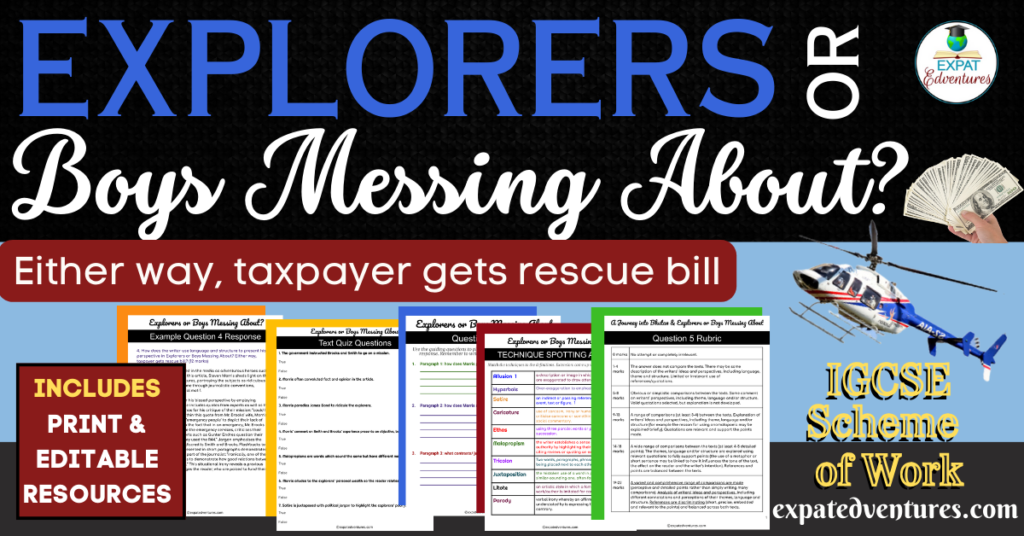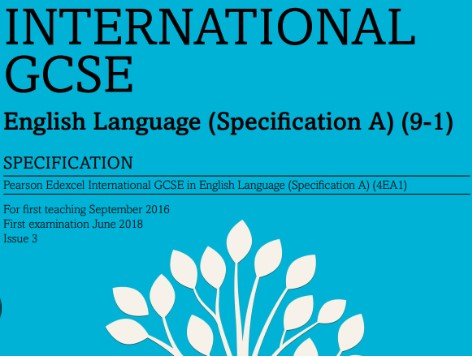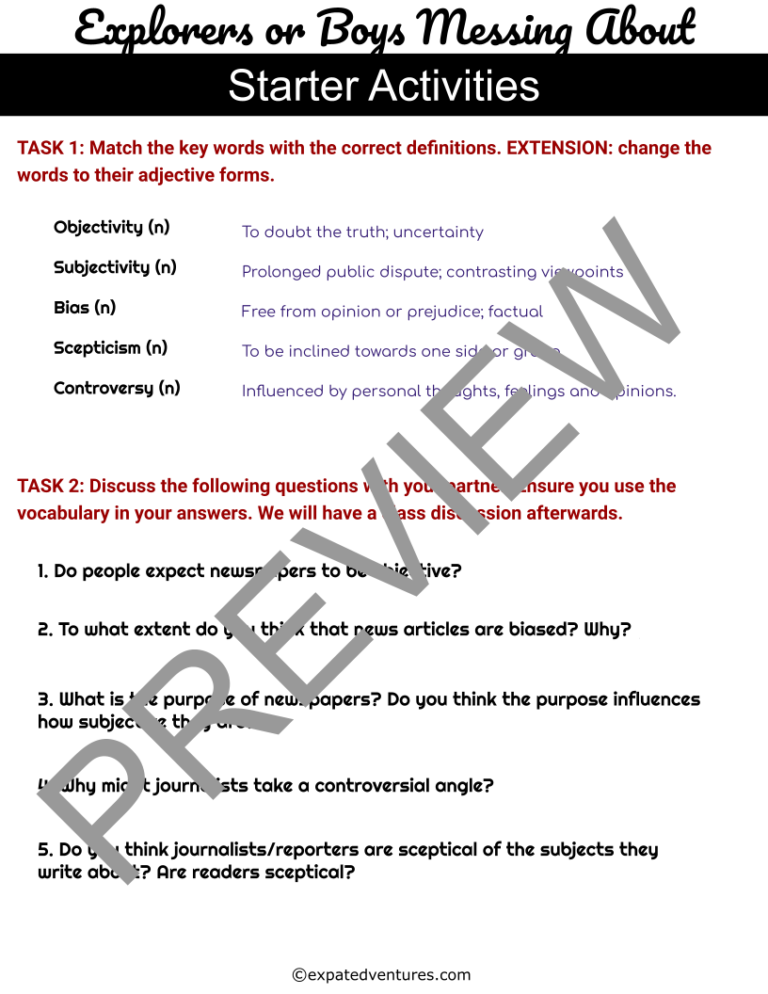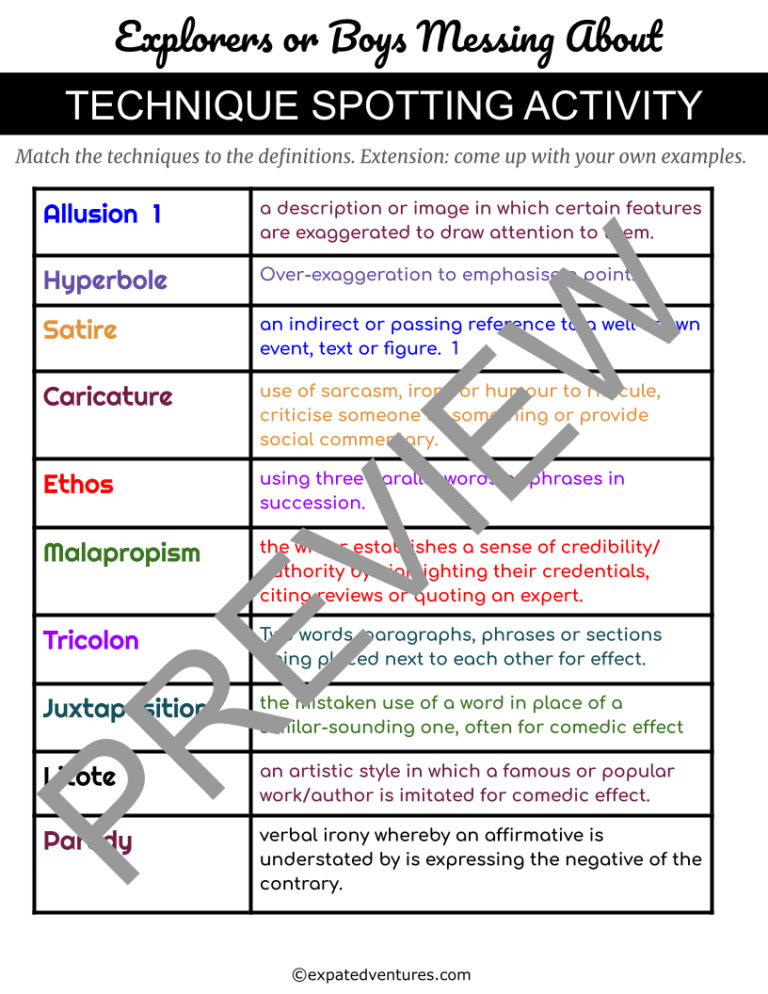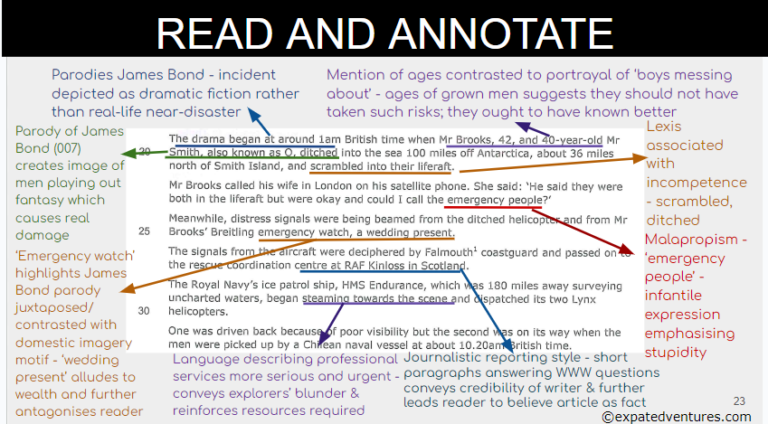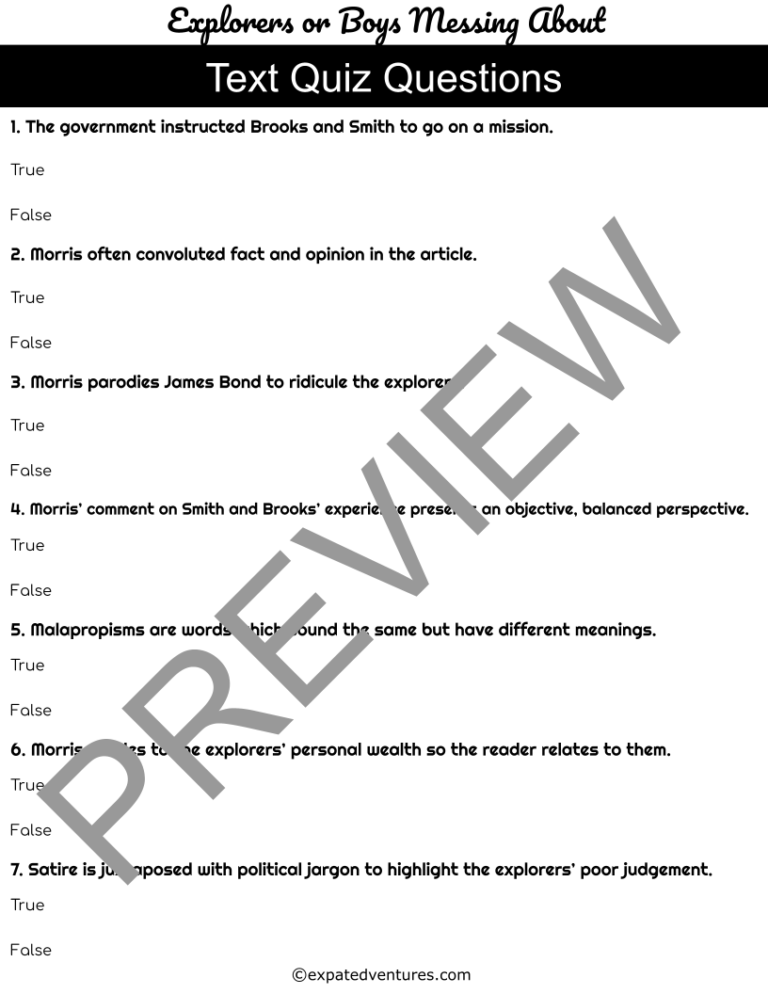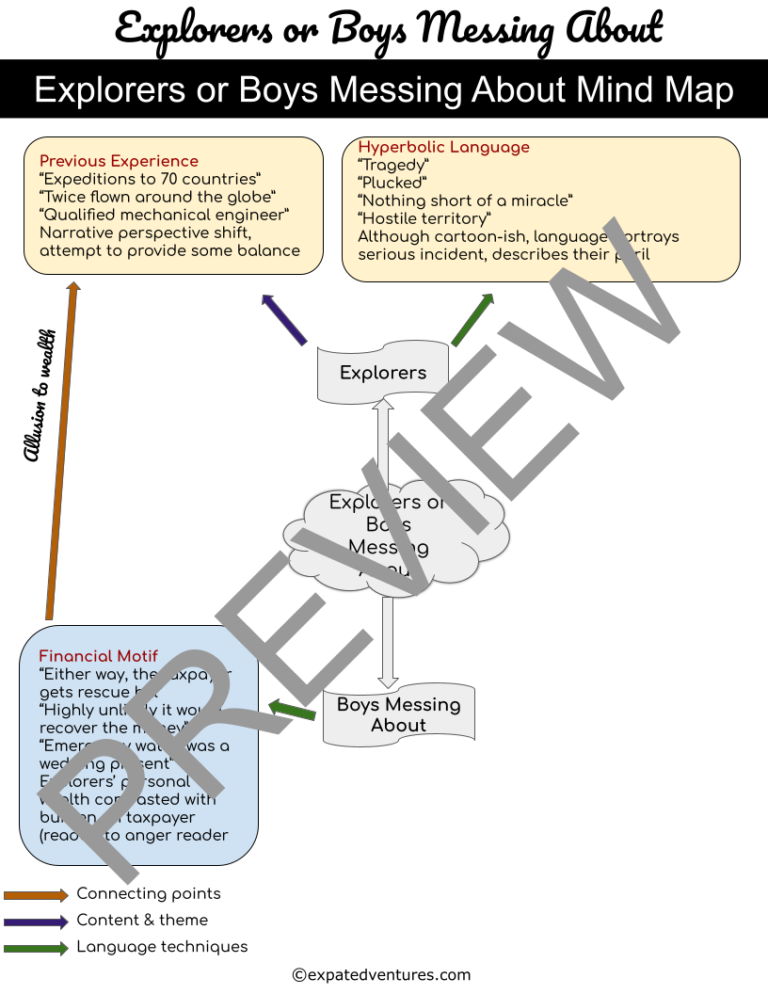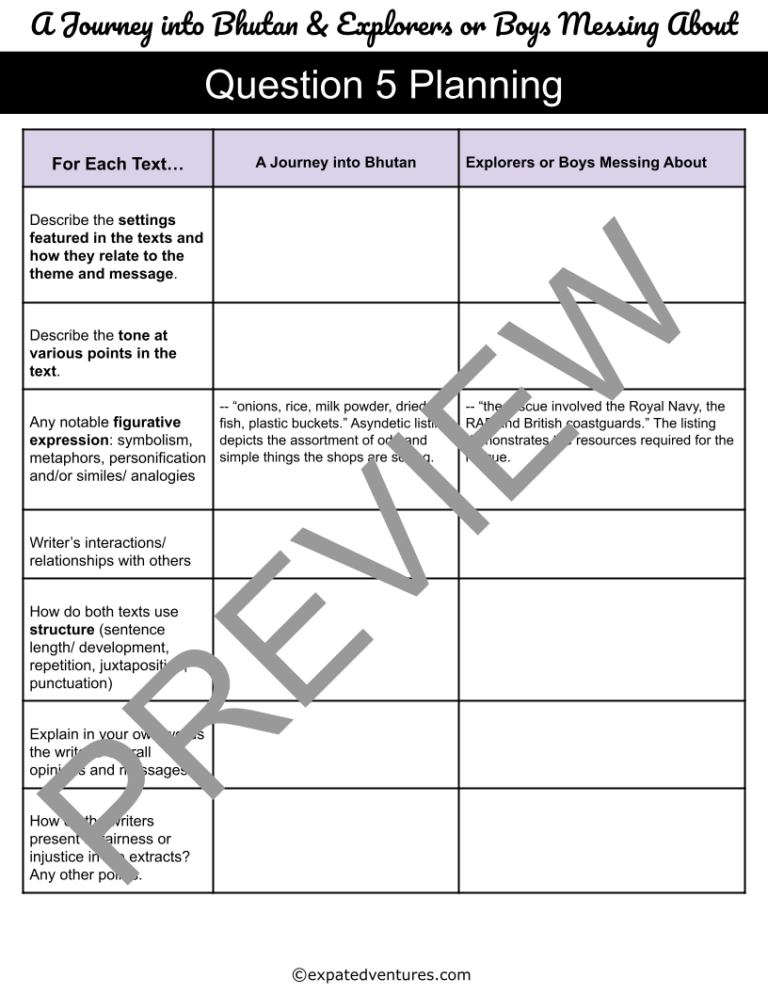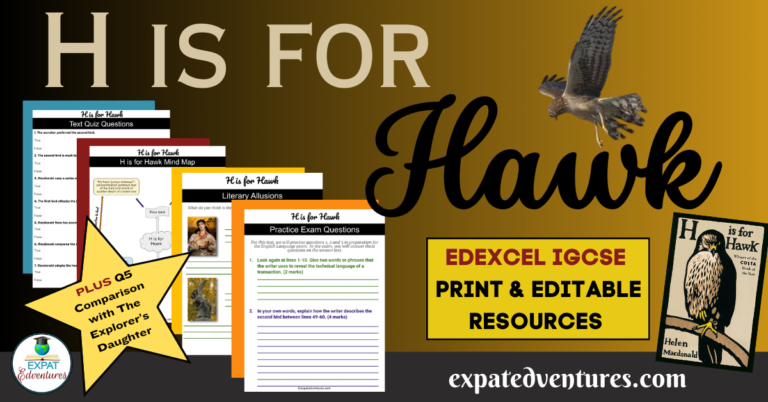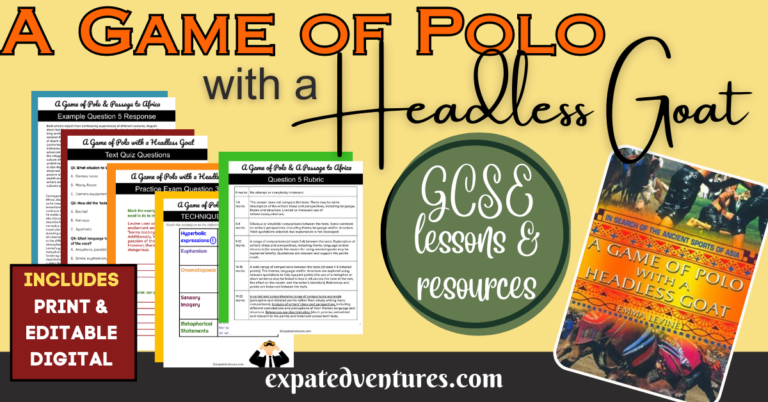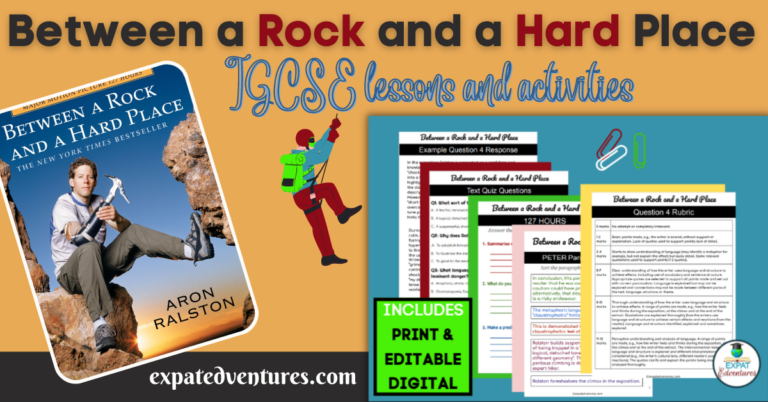Explorers or boys messing about? Either way, taxpayer gets the rescue bill is currently taught on the Edexcel GCSE/IGCSE English Language Paper 1 curriculum. It is one of the 10 non-fiction texts which students answer on in Section A. This guide to teaching the extract includes resources, ideas and teaching tips. The Explorers or boys messing about resources pack contains editable Google Slides, detailed annotations, practice exam questions with a mark scheme and quiz questions with an answer key. All resources are available as downloadable PDFs and as editable Google documents so that you can alter them to suit your students.
Explorers or boys messing about is a newspaper article, published in The Guardian in 2003. It reports on an accident involving two explorers, Steve Brooks and Quentin Smith, on a helicopter mission off Antarctica. The reporter, Steven Morris, critiques and ridicules the explorers, labelling them as ‘boys messing about.’ Furthermore, Morris evokes rage in the readers by inferring that they, as taxpayers, will pay for the explorers’ blunder.
Morris parodies superheroes such as James Bond to convey the explorers as idiotic amateurs; but how can we support students to capture that in their exam essays? How can we break it down to consider not only the message from a critical stance, but how Steven Morris juxtaposes fact and opinion to present his biased opinion?
Explorers or boys messing about IGCSE Resources
As a GCSE examiner of more than a decade, I aim to create resources to help students improve their exam scores. So, I’ve created a scheme of work for busy teachers to take you step-by-step through the text from the angle of exam performance. It contains everything from an engaging, thought-provoking starter, to language techniques, to analysing and annotating the text. There are also practice Edexcel GCSE style questions on the text, including a comparison to another GCSE text, ‘Beyond the Sky and the Earth: A Journey into Bhutan’.
This resource contains editable Google slides, quizzes with answer keys, exam questions, a model paragraph and close textual annotations of the whole GCSE extract. Furthermore, all activities are ready to download and print in PDF form or there are links for you to personalise them if you wish.
Edexcel IGCSE English Language Exam Paper 1
The 2 hour 15 minutes Edexcel IGCSE English Language Paper 1 exam is split into Section A and Section B. Section A is the reading assessment and candidates are presented with one of the 10 non-fiction Anthology texts and one thematically linked unseen text. The texts are between 1.5 and 2.5 pages long. They have 5 questions to answer in Section A:
- A 2 -mark retrieval question. The skill being assessed in this question is lifting and copying two brief and relevant quotes from the unseen text.
- A 4-mark summary question. Candidates are asked to paraphrase a certain event, character or theme from the unseen text.
- A 5-mark ‘SQUID’ question (it’s an acronym not a slimy sea creature!). Students identify five distinct details from the unseen text and use quotations to support their points.
- A 12-mark extended analytical response on the seen text.
- A 22-mark comparative essay, usually based on the writers’ perspectives, experiences or feelings.
Section B is a writing assessment. Candidates choose between two options, which are normally loosely based on the Section A texts. The text types include a letter, article, speech or leaflet. Both Section A and Section B are equally weighted, worth 45 marks each.
Explorers or Boys Messing About IGCSE Starter Resources
To start teaching this extract, I introduce students to objectivity and subjectivity in the media. I start by defining key terms, such as subjectivity, bias, scepticism and controversy. This gives students the language to discuss this text from a critical perspective.
Next, I ask students to discuss questions designed to provoke thought about bias and controversy in pairs or small groups. I find it useful to encourage students to think about the purpose of newspapers and reasons reporters write articles. Then, ask students to consider whether they think readers generally believe what they read and watch in the news or whether they’re more sceptical about the content. I’ve included a case study example, relatable to students, for them to consider how an article might be pitched from different angles. This helps students to think about the angle and bias in Explorers or Boys Messing About.
After that, I find it effective to look at genre. In this case, the differences between broadsheets and tabloids and how they are perceived. There is a mix and match resource which students can do independently or as a class discussion activity, depending on their prior knowledge of newspaper types. Despite being perceived as publishing reputable, more objective news, this article in the broadsheet The Guardian is heavily biased.
Edexcel IGCSE Explorers or Boys Messing About Language and Structure Techniques
Before diving into the text, I quickly review key language techniques in the extract so that they are fresh in students’ minds as they read. For this text, I have included key techniques and definitions for 10 techniques used by the writer to create effects. This Explorers or Boys Messing About resources pack includes a matching activity as a PDF worksheet and on the Google slides. Students match the definition and technique, which they can either copy, cut and paste or simply number. As an extension, students can write their own examples of the techniques. This is also a useful revision tool for Explorers or Boys Messing About and any of the other texts assessed at GCSE.
Explorers or Boys Messing About Annotations
Prior to close textual analysis, I often ask students to do an initial reading with two different coloured highlighters. They highlight language which portrays the men as ‘boys messing about’ in one colour. In another colour, students highlight instances in which the men are depicted as ‘explorers’. It is a fairly straightforward text for students to understand on a surface level. Steven Morris reports on the accident of two explorers, taking the perspective of annoyance that the taxpayers must fund the elaborate rescue mission. The more challenging skill comes in unpacking how Morris conveys his viewpoint using satire, parody and caricature amongst other techniques.
When it comes to closely analysing the text, there are a few ways of approaching the activity. You can read and annotate together with students completing the annotations in real time. Alternatively, you can split students into groups and ask each group to focus on a certain paragraph before feeding back to the class. Or you could read and discuss, then ask students to complete the annotations for homework.
There are many ways of approaching close textual analysis. I find that varying the method for different texts keeps students interested through the unit. This Explorers or Boys Messing About resources pack contains detailed line-by-line annotations for you to share with students.
Assessment for Learning Quiz Questions and Answer Key
After analysing the text, I do a quick assessment for learning quiz with students to assess their understanding of the language and structure of the text. Then, I introduce exam practice questions. Quiz questions for a straightforward low stakes true and false quiz with answers are available on the slides and in PDF form with this Explorers or Boys Messing About resource. This can be done as a whole class activity on the interactive whiteboard or handed out to students to do in pairs or individually, depending on your time and the nature of your class.
Explorers or Boys Messing About Mind Mapping Activity
When composing longer exam responses, students often struggle to plan their ideas. They are left wondering; how do I start? What do I write and in what order? A mind map is a good tool for students to revise the texts. Additionally, it supports students to produce a cohesive analysis and plan out their ideas so that they avoid repetition.
I have included an example of a mind map in this Explorers or Boys Messing About GCSE unit of study. I split the mind map into ‘explorers’ and ‘boys messing about’ in the first instance. Students can then find evidence for how Smith and Brooks are portrayed as credible explorers involved in a tragic accident. On the other hand, they can make notes for how they are presented as careless, inexperienced boys who don’t consider the consequences of their actions. Then, they can use colours, notes, diagrams or images (however their brain works) to connect and order their ideas. This will then lead to perceptive connections being made and the notes can be organised into a cohesive essay.
IGCSE Past Paper Questions and Model Answer
For this text, I have included a sample question 4 and 5 for this text. Language Paper 1 comprises of 5 questions. I cover all the question types and skills required over the course of teaching the 10 texts. For more detail and practice questions on questions 1-3, please see my resources on Danger of a Single Story and Beyond the Sky and the Earth: A Journey into Bhutan.
In terms of question 4, firstly, take students through the rubric so that they familiarise themselves with how the response is awarded. Then, you can take students through the example PETER paragraph (point, evidence, technique, explain, refer). Provide prompts so that they can organise their ideas before they attempt to answer the extended essay. This way, there are scaffolds in place to support students to produce high quality responses.
After the class has written the answer under timed conditions, ask them to self or peer assess their responses against the rubric. You may want to mark their work too. In order for them to see how to develop an essay, I have included a full mark example response in this resource pack. It’s useful to ask students to mark the example essay, then compare it to their own work for quality, writing style, use of quotations and range of points made. Students will then hone and develop the skill of improving their own responses to bridge the gap between where they are and what is required to achieve full marks.
You may want to ask them to ensure multiple relevant quotations support a range of clear points, subject terminology is identified and discussed, and arguments are developed. There are examiner notes included under the Google Slides.
Explorers or Boys Messing About IGCSE Mark Scheme
For this text, I also introduce students to Question 5 on the English Language Paper 1 – the 22-mark comparative essay. In the exam, students compare the studied set text to an unseen text, which is usually thematically linked to the text studied in class. If you are teaching all 10 texts and have a limited time, you can ask students to compare to one of the set texts before you study it in detail. I find that ‘Beyond the Sky and the Earth: A Journey into Bhutan’ compares well with ‘Explorers or Boys Messing About’. Although their subjects and viewpoints contrast, they both have travel and exploration as a central theme.
I first give students the question of focus. Before asking them to answer it, I go through the rubric. You could ask students to highlight key words or identify skills required to achieve top marks for this question. Then, ask students to complete a comparison table after simply reading the ‘Beyond the Sky and the Earth: A Journey into Bhutan’ text (not studying it in detail yet to mimic the exam). They make notes identifying similarities and differences between the texts. It’s useful for students to do a brief condensed version of this process in the exam. I have included an editable template with key comparisons in the scheme of work as well as a completed teacher version.
Explorers or Boys Messing About Analysis
Once they have done the notes in pairs or independently, take feedback. Students could complete this digitally then combine notes on a shared document or platform if your situation enables digital interaction between students (sharing a document on Teams for example). Now that students have generated ideas and selected relevant quotes to write in their comparative essay, I share an example of how to construct an effective comparative paragraph. As an examiner, I see many superficial and unorganised comparisons, which reduce students’ marks. Teaching a paragraph formula can help students quickly and effectively construct cohesive essays.
A big part of comparative writing is connecting ideas. I have included a quick connective activity to compile a variety of comparison and contrast connectives. This way, students have a range of ‘signposts’ for their ideas available to them in their ‘exam toolkits’. When that quick activity is done (answers included in the resource pack), students can actually write their answers. Giving them a framework and collective idea generation enables them to write higher quality answers straight away.
Edexcel GCSE English Language Transactional Writing Practice
There are also a couple of creative activities included in this resource. Time-permitting, you could use it as a class activity if you feel that students aren’t connecting with the text, as a homework assignment or an extension activity to challenge students to broaden their perceptions of the text. This can help develop skills required for Section B of Paper 1 (Transactional Writing) and Section B of Paper 2 (Imaginative Writing).
Explorers or Boys Messing About IGCSE Lesson Activities, Resources and Revision
To sum up, some of the best techniques for teaching the 10 non-fiction texts and creating great revision resources for students include:
- Hook students with an intriguing starter activity
- Use alternative methods to closely analyse and annotate the text
- Quiz students for quick AFL to assess whether they are engaging with the text
- Practise either questions 1-3, question 4 or question 5 from the Language paper
- Study model answers, including examples of typical mistakes students make in the exam responses
- Offer an optional creative activity as homework or an extension to challenge students’ perceptions of the text
Good luck teaching Explorers or Boys Messing About – it’s interesting to delve into how the media reports to us from different angles and the subjectivity versus objectivity of the press. There are many debates which students can engage in. These may include the extent to which news outlets are obligated to report objectively to the public, the purpose and intentions of news reports and how sceptical readers are about the level of bias in news articles. Comment below if you can add any useful teaching and learning techniques for this text.
If you enjoyed this article about teaching ‘Explorers or Boys Messing About’, you might also find value in my Edexcel IGCSE Paper 2 guides and resources for ‘Out, out-‘ and ‘Disabled’. There are also Edexcel IGCSE English Language Paper 1 guides and schemes of work for many of the set texts, including Chinese Cinderella and A Passage to Africa. Thank you for reading and follow my store for more as resources are constantly being added.

